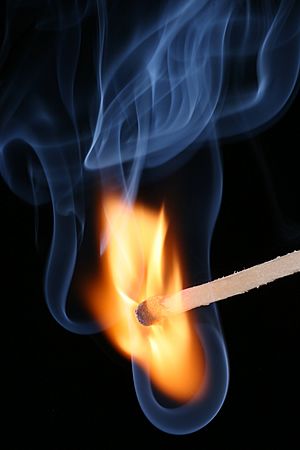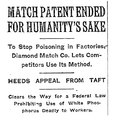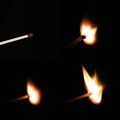Match facts for kids
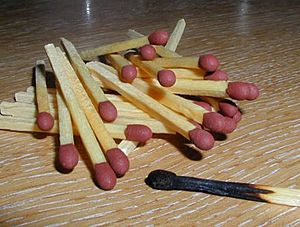
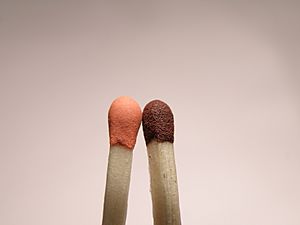
A match is a tool for making fire under controlled circumstances. Most often, it is a small piece of wood, or hardened paper. At one end, the match is coated with a material that will ignite from friction. The lighting end of a match is known as the match "head". It either contains phosphorus or phosphorus sesquisulfide as the active ingredient and gelatin as a binder. Matches are sold in multiples, packaged together either in a box, or in matchbooks. There are two main types of matches: safety matches, which can be struck only against a specially prepared surface; and strike-anywhere matches, for which any suitably frictional surface can be used.
There are also electric matches, which use electricity and not friction to produce a fire.
Early matches
Matches that used sulfur were mentioned by Martial in ancient Rome. He called them sulphurata.
Around the year 1530, Matches appeared in Europe. The first modern, self-igniting match was invented in 1805 by K. Chancel, assistant to Professor Louis Jacques Thénard of Paris, though. The head of the match was made of a mixture of potassium chlorate, sulfur, sugar, and rubber. They were ignited by dipping the tip of the match in a small asbestos bottle filled with sulfuric acid. This kind of match was quite expensive and its usage was dangerous, so Chancel's matches never gained much popularity.
Special-purpose matches
Storm matches, also known as lifeboat matches or flare matches, have an easy to strike tip like a normal match, but much of the stick is coated with a combustible compound which will keep burning even in a strong wind. They have a wax coating to make them waterproof. They are a component of many survival kits. This particular match was used in the first mass-produced Molotov cocktails.
"Bengal matches" are actually small hand-held fireworks akin to sparklers. They are similar to storm matches in form, but they include compounds of strontium or barium in the compound on the stick to produce a red or green flame respectively.
Related pages
- A site demonstrating jet propulsion using matches and foil
Images for kids
-
The Alchemist in Search of the Philosophers Stone (1771), by Joseph Wright, depicting Hennig Brand discovering phosphorus.
-
A tin "Congreves" matchbox (1827), produced by John Walker, inventor of the friction match.
-
The New York Times report dated 29 January 1911
-
Old match factory in Itkonniemi, Kuopio, Finland
-
Super Deportistas matches from mid 20th century Mexico, part of the permanent collection of the Museo del Objeto del Objeto, in Mexico City.
See also
 In Spanish: Fósforo (utensilio) para niños
In Spanish: Fósforo (utensilio) para niños


